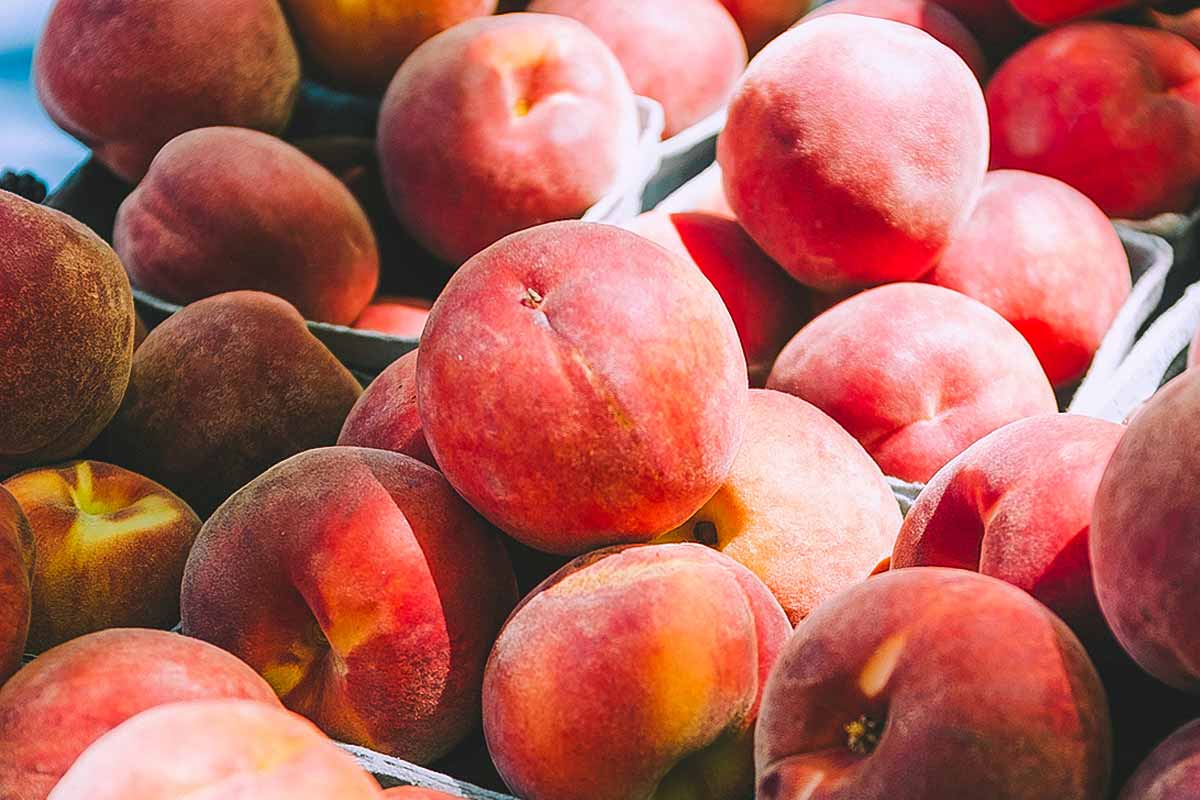
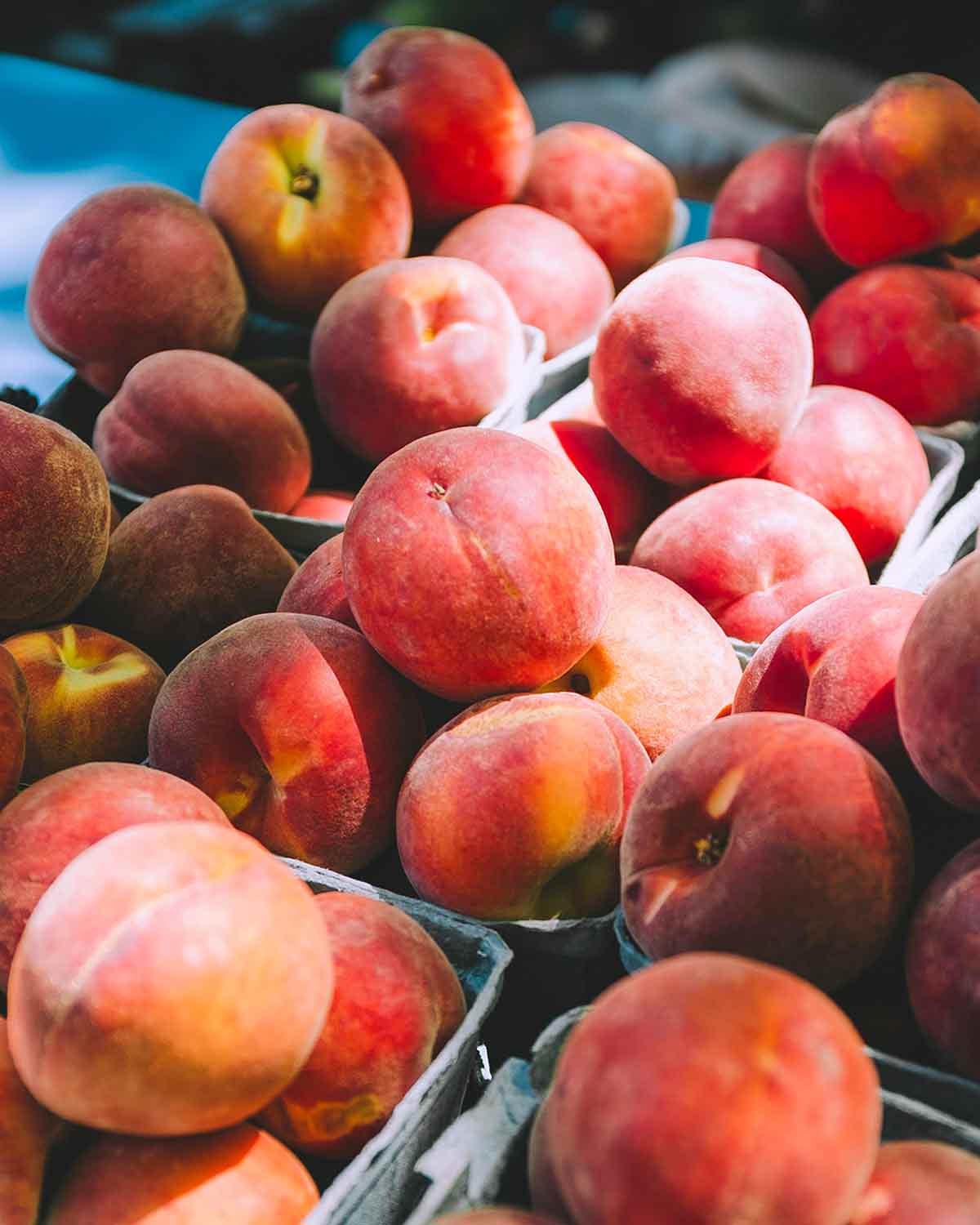
Each summer, usually by late July, I get the call. And the conversation goes the exact same way each year. With equal parts frustration and sheepishness and sadness, my mom explains that she splurged on fresh peaches at the market, they turned out to be soul-crushingly tasteless, and she’s never, ever buying peaches again. I try to offer tricks to keep her from experiencing that again. Yet she’s pretty set on no longer being disappointed and isn’t in the mood for it. So I’m sharing them here in the hopes that we’ll all be reminded how to select a peach that’s ripe—and not just in a ready-to-eat way but an exquisitely satiating, aromatically ripe, juice-dripping-down-your-elbow-lovely sorta way.
1. Seek out local peaches
Peaches are a delicate bunch and don’t take kindly to being jostled about during shipping. Ergo, the more local your peaches, the less distance they have to traverse, the longer they can stay on the branch, and the more likely they are to be picked hours before you purchase them. Hence, ripe. Simple math.
2. Look for richly colored peaches
When you behold piles of peaches at the greenmarket or store, hold out for the most vibrantly colored and pleasing little orbs. You want a deeply hued peach that looks like it belongs in a painting by Picasso, who famously uttered, “One does a whole painting for one peach and people think just the opposite-that particular peach is but a detail.” It’s not the splash of red or dark orange you want so much as an intense and uniform background color. The paler the backdrop, the more timid the flavor. And eschew any stone fruits with a tinge of green, please. That’s an indicator that the peach isn’t ripe and was plucked from the tree far too early.
3. Fondle peaches to ascertain softness
Can’t emphasize enough the need to use delicacy here. Don’t grab a fruit and pinch it as you would your niece’s cheek. Let the fruit rest heavy in the palm of your hand and give it an ever so slight squeeze. If you’re met with barely any resistance and just a gentle yielding, take it home and let it sit a day or so before you bake. If instead it feels soft but not squishy, it’s a candidate for baking or eating out of hand that same day. If the peach already appears bruised, it’s overripe. And if it wasn’t bruised before you held it but is after, be a decent human and own your mistake by buying it anyways and tossing it into pie or preserves where you can still put the fruit to good use and mask your gaffe.
4. Sniff the stem end of peaches
Looks ripe. Feels ripe. But does it exude the intoxicating aroma of ripe peach? You want to hold the stone fruit close and inhale. There’s some dissension on this topic, but in my experience, a perfumed fragrance emanating from the peach, notably the stem end, is (unscientifically) correlated to its sweetness. The more intoxicating the smell = the more knee-wobbling the sweetness. Caveat: If the peaches are stored at the store chilled, the fragrance will be muted.
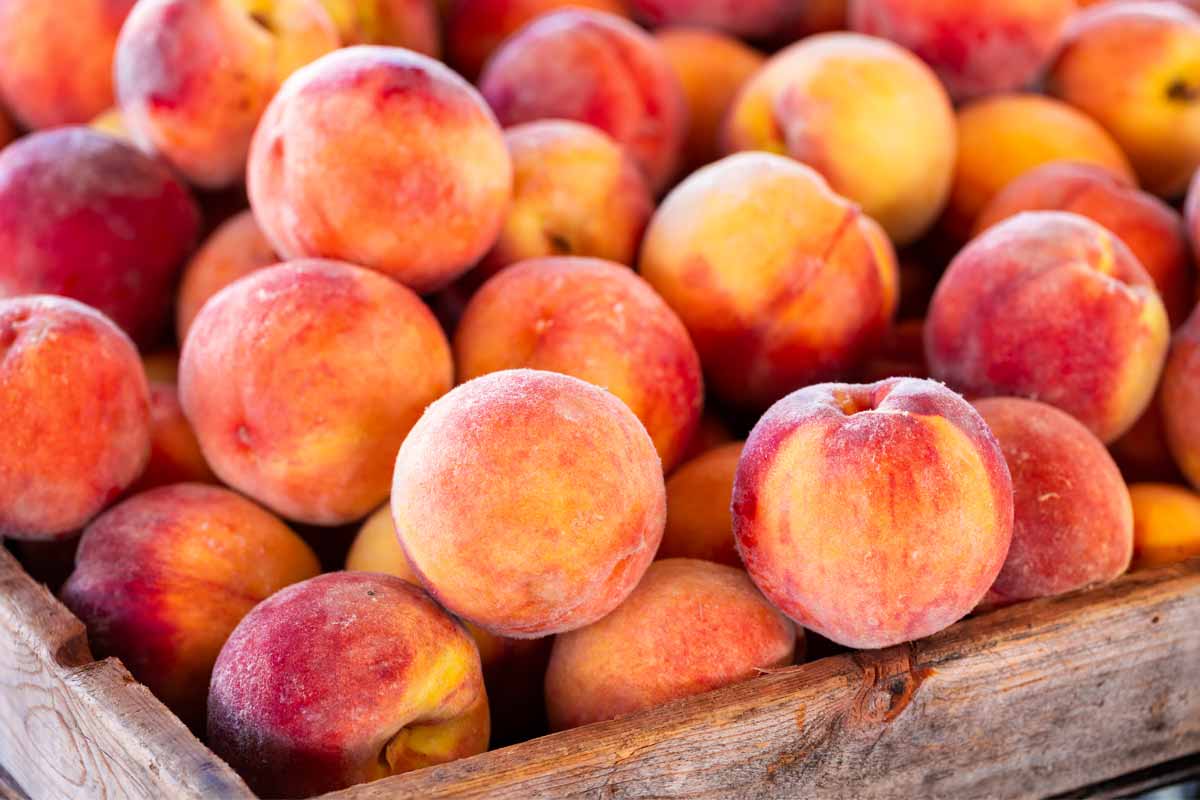
Want to Save This?
5. Take note when you find some lovely peaches
I rarely opt for peaches when I have to buy them already bundled into those pint boxes. You want to select each peach yourself. And when you do find them, take note of where you found them, whether you Instagram the farm stand at the market where you found the loveliness or you simply take a photo for yourself of the sticker that came from that magical shipment at your local grocery store.
And then, once you get home . . .
You’ve selected your peaches. You’ve managed to transport them safely to your counter without the bagger dropping or squishing them. And then you notice that, in your giddiness, you misdiagnosed and the peaches piled high in crates that were sooooooooo tempting are harder than you thought. To help ripen ’em, simply tuck them in a brown paper bag for a day or three. This traps the natural ethylene gas they emit which will, in turn, hasten ripening.
Once your peaches are firm yet still have a little give or even softer, you can be unconventional and simple and grill the peaches. Or you can go with tradition and turn them into our peach cobbler, which folks are saying is “the finest that I have ever, or will ever, eat.”
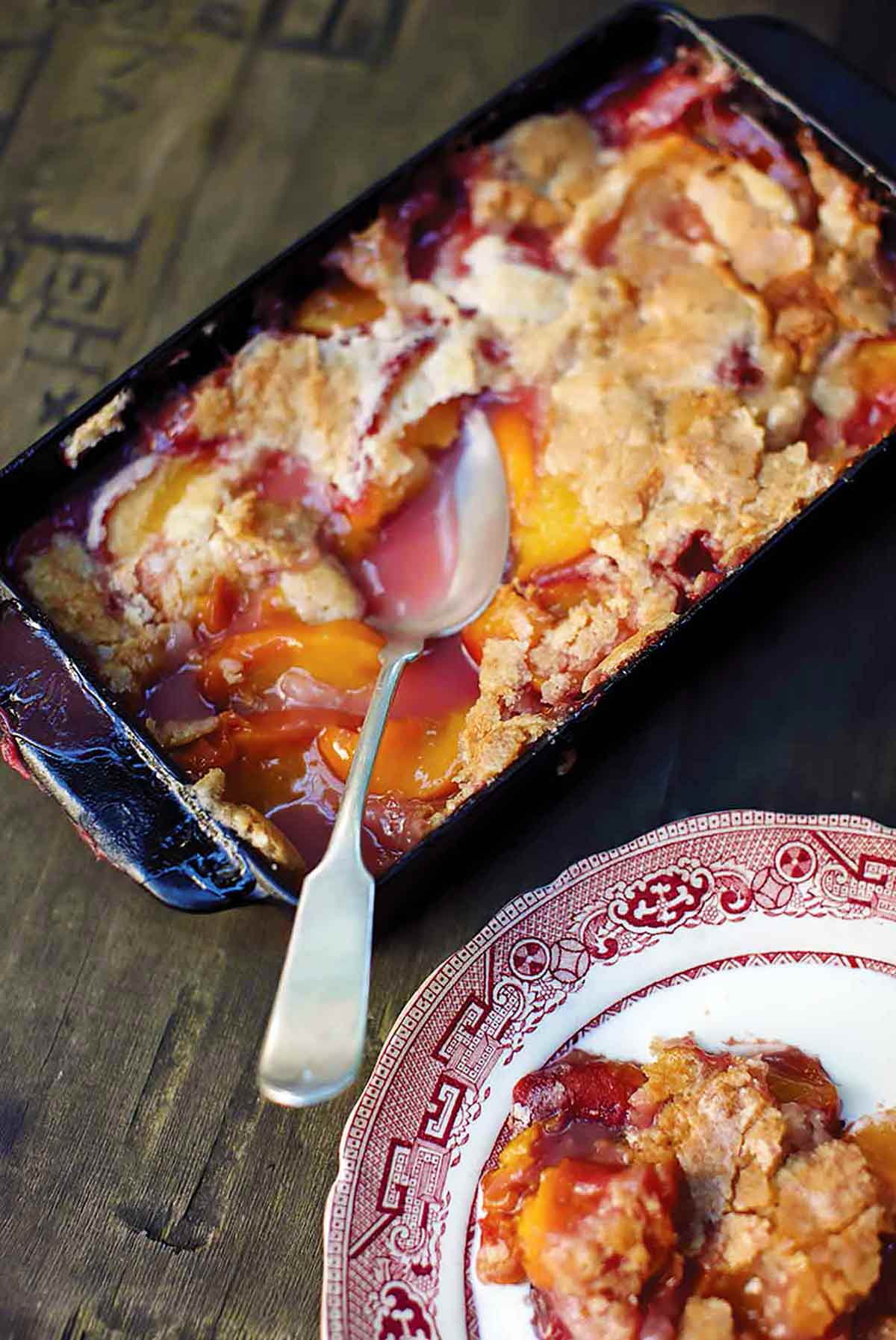
Or the slightly more time-consuming and sophisticated peach and crème fraîche pie.
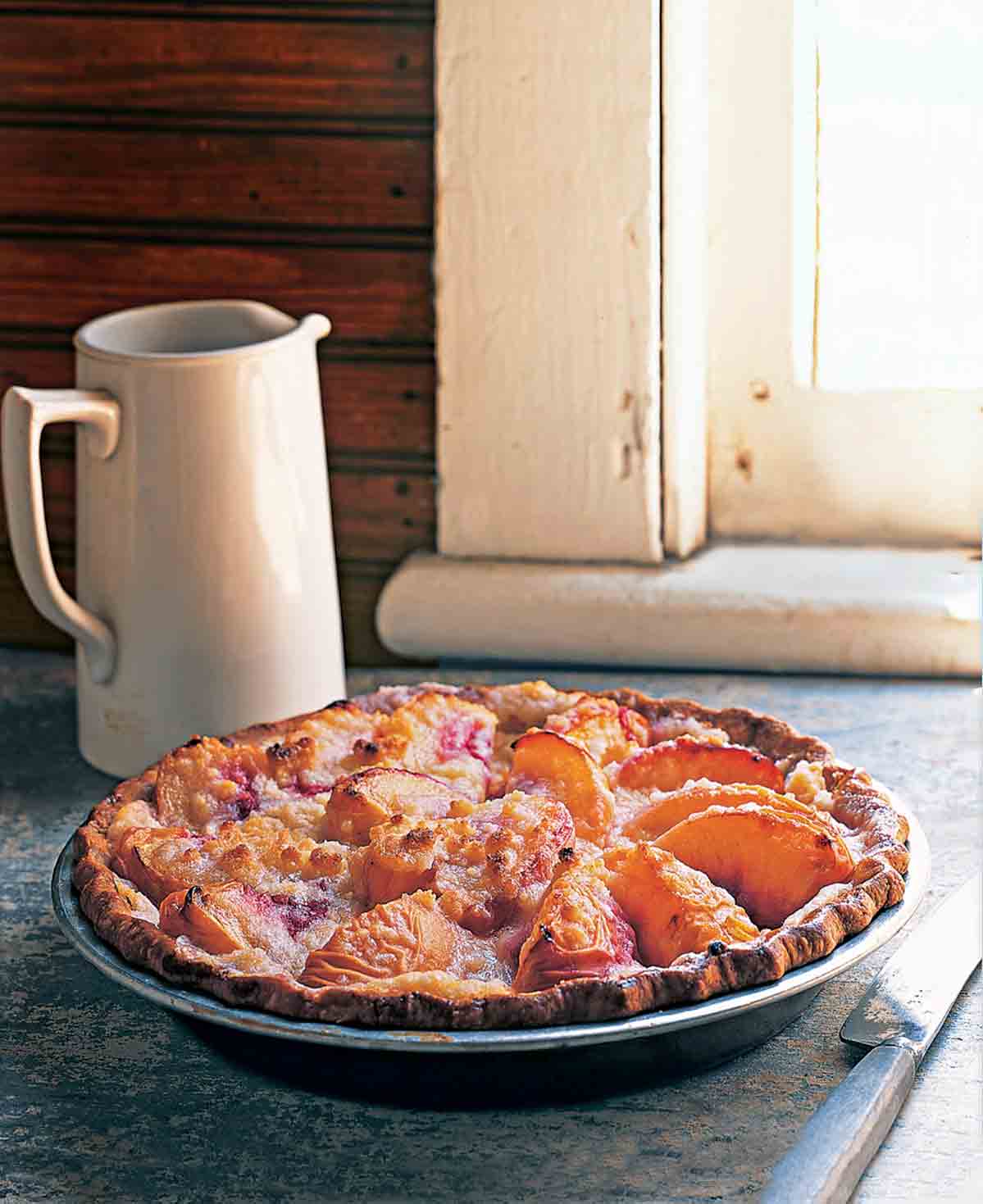
If you end up with peaches that got a touch too soft to hold their shape when sliced, simply turn them into preserves, such as this sweetly tart peach and rhubarb jam, and all will be forgiven. Or at least disguised.
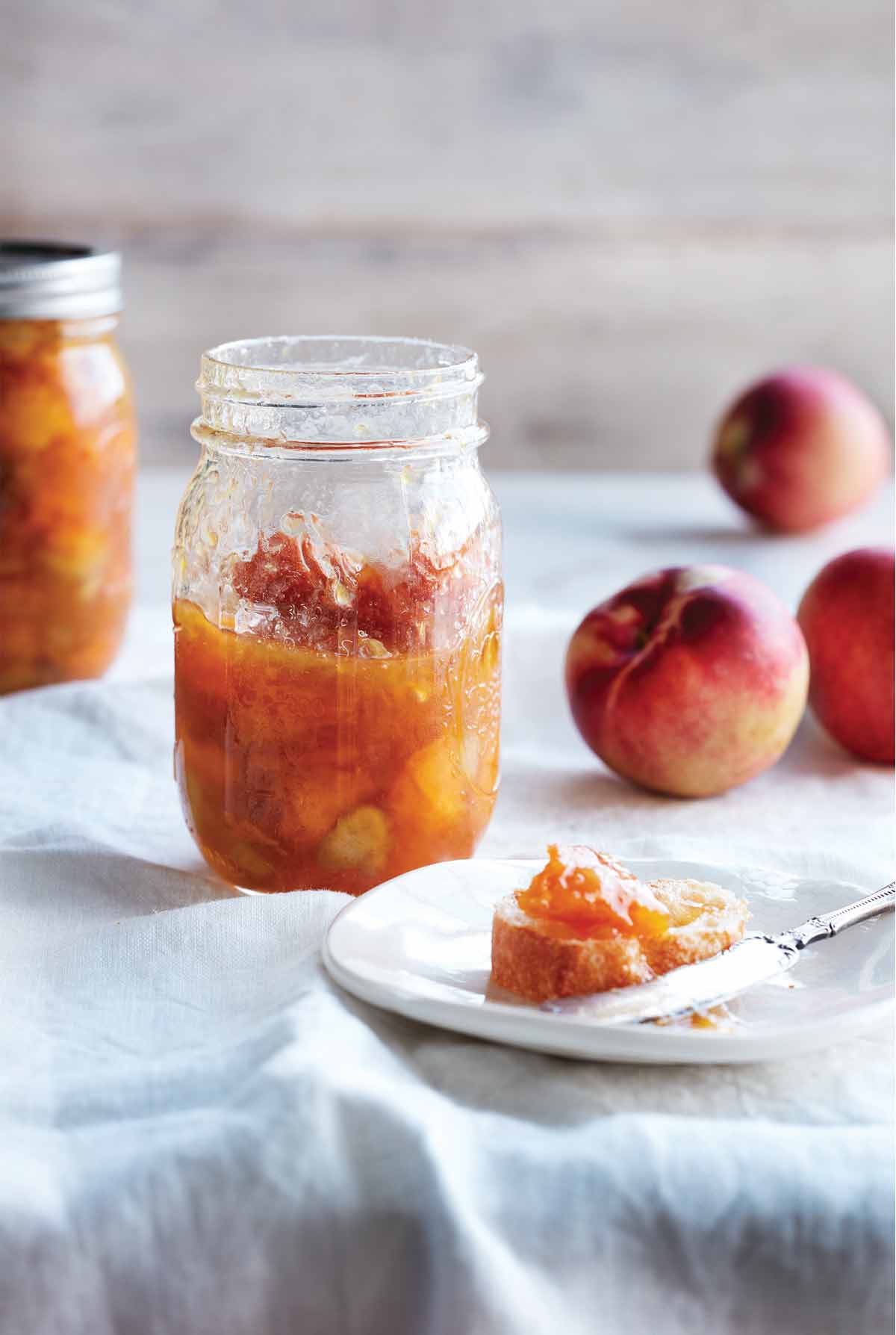
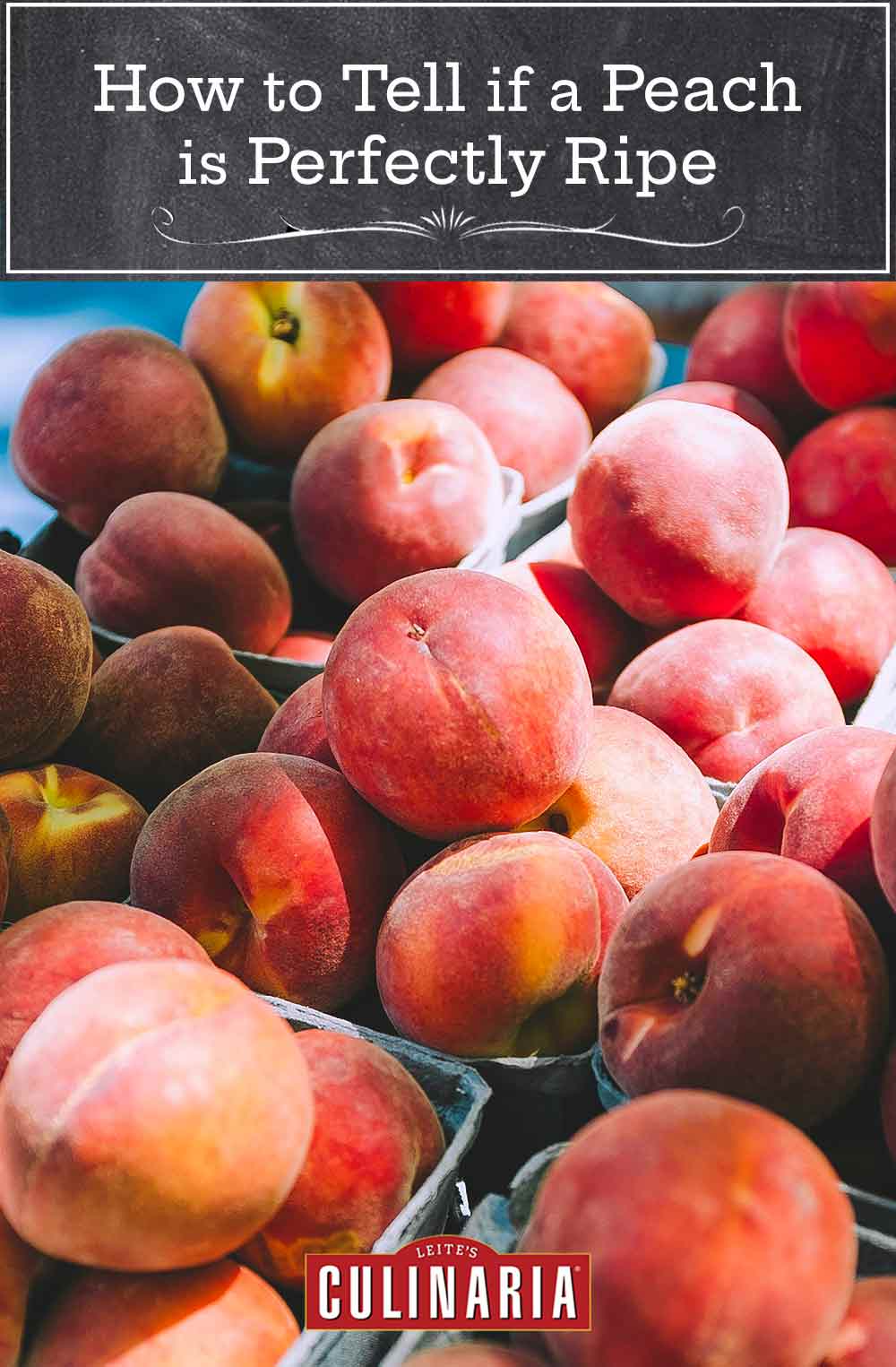










Number one is the most important and if you can buy them directly from the orchard, all the better. Living in SC, we have some amazing local peaches with a nice long season. And that peach cobbler is definitely my favorite.
Absolutely, Heidi! You’re very lucky to have direct access to perfectly ripe peaches.
One more way to tell if a peach is ripe: take a look at the skin around the stem. If it is greenish, I don’t buy. If good and yellow, give I give it a try.
Now, how to tell if a peach is MEALY and dry. Those things are awful and good for nothing.
Thanks, L. Watts! Yeah, green is a no go. And true, the mealy ones are dismal and disappointing and just sorta make you disappointed in life for a quick second. Wish I had a use for them other than augmenting the compost heap…
What gets me is when all the stars align and the peach is STILL mealy. Been there, done that, gawd forbid I do it again.
Grocery store peaches around here must be checked carefully. The skin goods great, there is some aroma, but if that green is around the stem, well, the are not good for eating fresh though sometimes they make a decent pie.
Completely agree, L. I’m glad you have some grocery stores peaches you can find that are lovely. I’ve completely given up on store-bought ones. I tend to toss the not-so-good ones in preserves but yeah, cooked down in pie also can work. We just have to get a little innovative.
One of the best memories of my childhood involved making fresh peach ice cream in summer. We would inevitably buy a bushel of peaches on our way home from visiting my mothes’s home town. She would be busy for days putting up peaches to last us the year but she would always take time to make the mix for ice cream.
My dad would pull out the old wooden-style ice cream churn and load it up with ice and rock salt. My brother and I had the task of cranking it until it was done. Our reward for doing all that work was getting to lick the paddle while we waited for the ice cream to solidify in the freezer.
To this day I think that was the best tasting ice cream in the world and peach remains my favorite.
Love that story and can almost imagine the two of you kids cranking, cranking, cranking away, bkhuna. Appreciate you sharing that. Incredible how food can conjure such lovely memories and emotions in an instant.